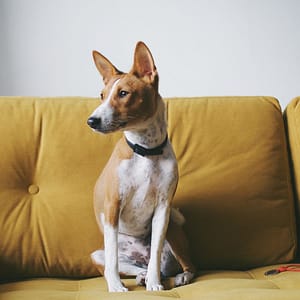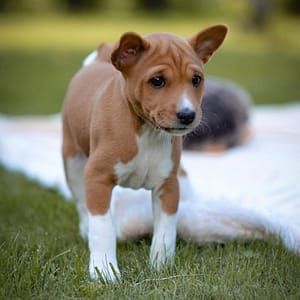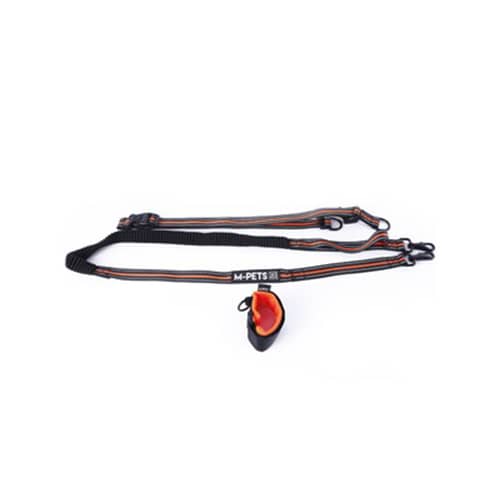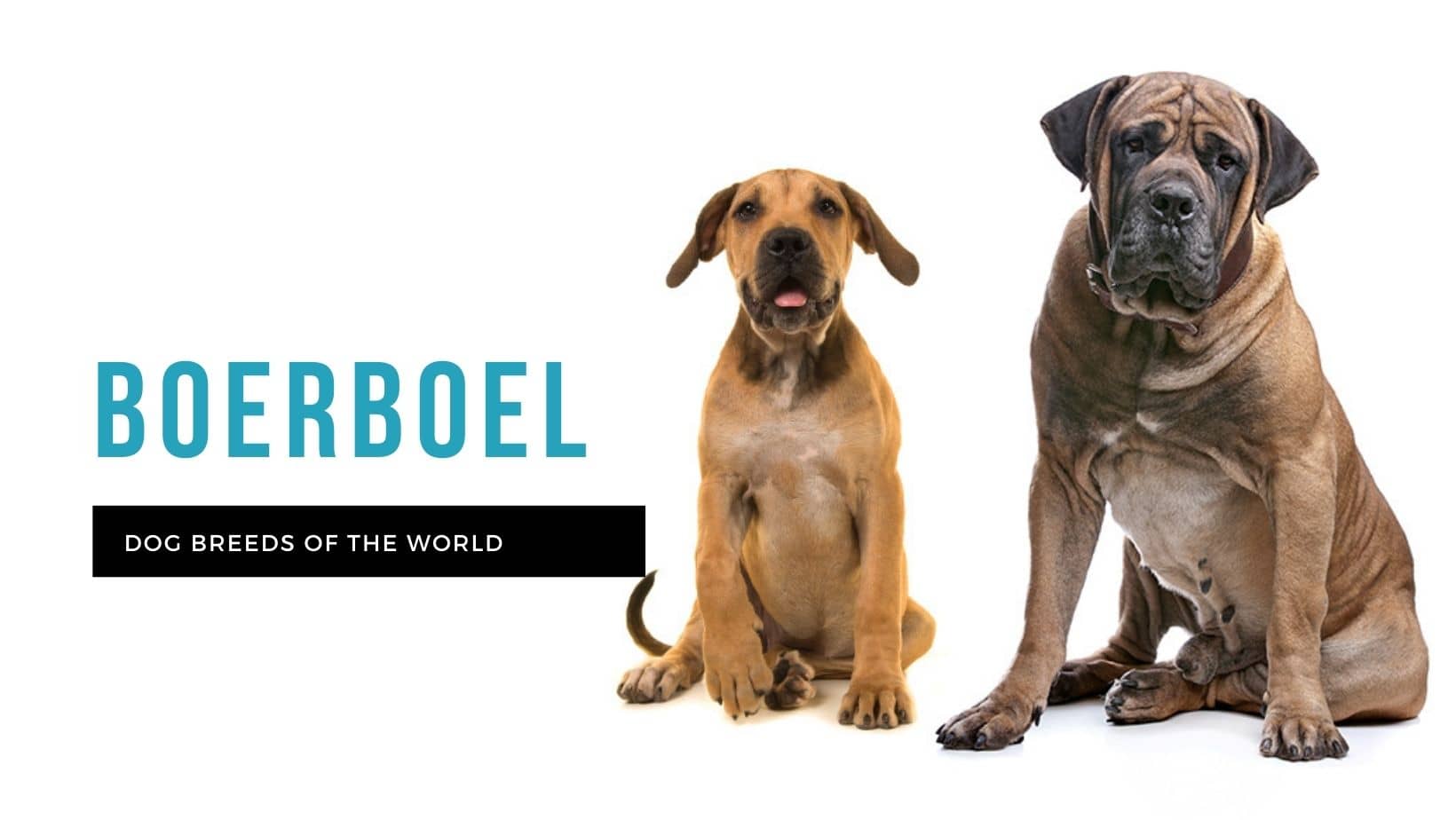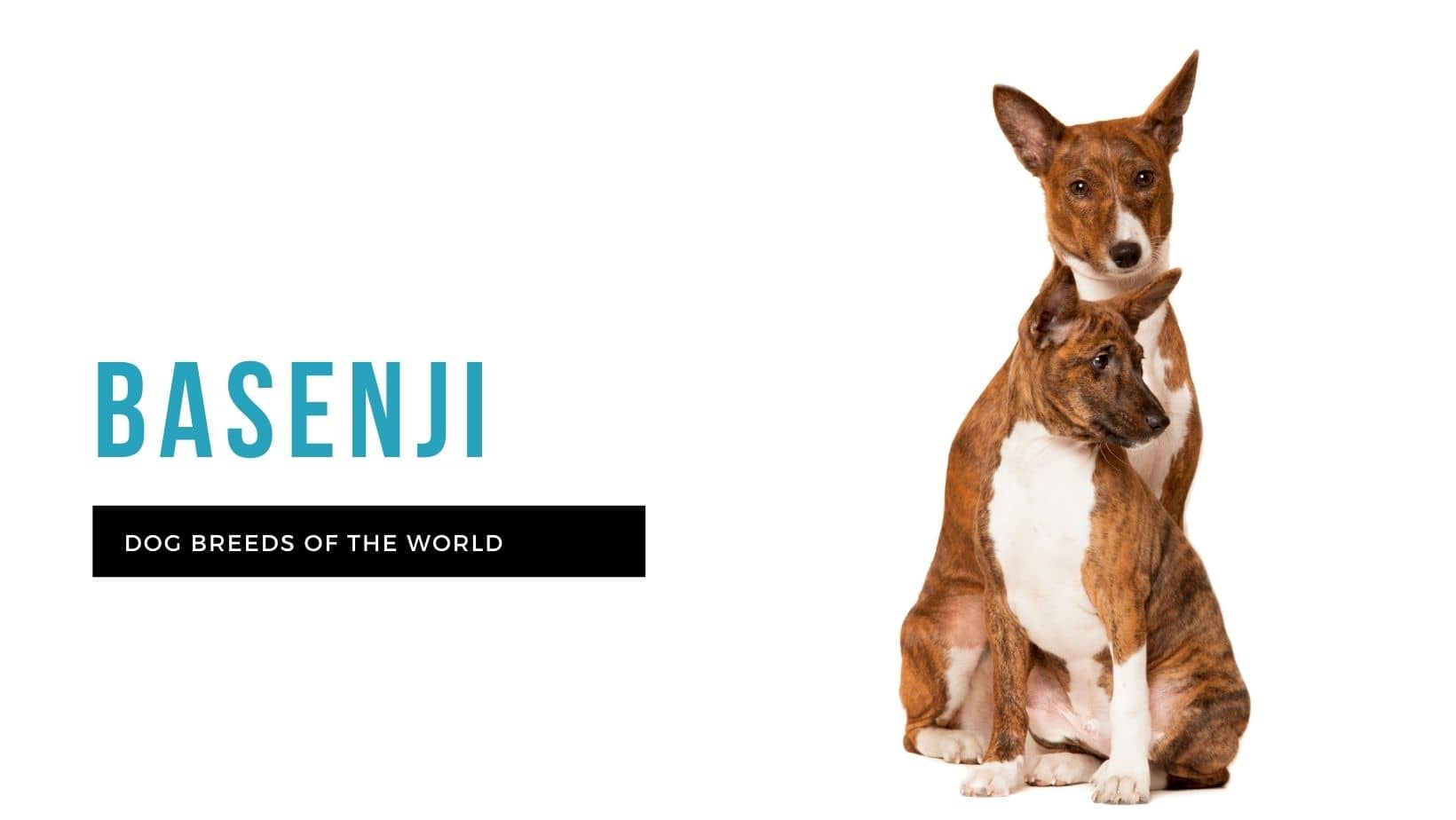
The small yet feisty basenji is an intelligent and independent little hunting dog that emerged from Congolese villages and has made his way into Western households over the last 130 years. His strong appeal lies in his high energy, short, shiny, clean coat, his animated face and his almost catlike ability to climb and to keep himself groomed.
The basenji is a one-of-a-kind breed and would be ideal for families with older children who can match the energy of the dog, or with adults who appreciate his athleticism. If not already, his owner would need to be a fastidious housekeeper to ensure the basenji doesn’t get up to mischief or chew things that are lying around.
History
The basenji is considered a basal breed – one of the oldest in the world. The basenji has been traced back to Egypt, appearing in Egyptian murals and artefacts as well as in the art of ancient Babylon and Mesopotamia. The modern basenji is considered to be descended from the first domesticated dog – not just in appearance, but also genetically. Just like dingoes and the New Guinea singing dog – both wild – basenji females go into heat only once a year; and in their home territory they are similar to pariah dogs – half feral, ‘free-ranging’ dogs that do not belong to a human household.
However, the central African basenji was revered for his fast, skilled hunting ability. He used his sight and scent to scout for prey, expertly jumping straight up in the air like a fox to find small prey in tall grass, and then using his bullet-like speed to chase it down and catch it. Living alongside humans rather than kept by them, the basenji breed remained largely unchanged for thousands of years. A silent hunter, the basenji is called the ‘barkless dog’ because his vocalisations sound more like yodels and yips than the barking we’re used to in domesticated dogs.
In the late 19th century, European and English travellers attempted to import the basenji back to the northern continent, but these ancient dogs succumbed to modern pet diseases. In 1923, Lady Helen Nutting attempted to import six basenjis from Sudan, which she had kept in Khartoum for a while. Arriving in England, the dogs were quarantined and subjected to the then still experimental inoculations against distemper. Despite surviving the bitterly cold ship voyage from Africa back to England, these hardy dogs died from complications from the injections. Lady Helen continued to support the efforts to bring basenjis to the West and it was around 10 years later that the breed became established in England by Mrs Olivia Burns. She also sent the breed to Canada and the USA.
A male basenji named Bois was exported from England to a Boston-based breeder and paired with his female named Congo. It is believed that this pairing began the breeding line in the US, while further imports of basenji broadened the gene pool and kept the breeding stock varied. The American Kennel Club (AKC) admitted the basenji to its books in 1943.
The basenji breed in South Africa is very rare because of how infrequently puppies are born.
Temperament
The basenji’s early history as ‘ownerless’ means that he is fiercely independent and makes his own decisions. He might want that positive reinforcement treat from you, but he’ll decide on when and how the transaction occurs. Intelligent and noble, the basenji is also playful and high-spirited. He is protective of his territory and his people, but will guard silently and only emit a bark or yip sound when there is good cause.
Historically an independent hunter, this breed is curious and catlike, readily escaping a yard to pursue small animals or an interesting sight or sound. Owners beware!
Health
Having survived for thousands of years, the basenji is a healthy breed, but he does have many conditions that are unique to his genetics. Not all basenji will develop any or all of these conditions, but it’s important to know what to look out for.
- Hip dysplasia
- Fanconi syndrome – A kidney disease in which the dog does not absorb proteins normally and urinates them away. It used to be fatal, but Fanconi syndrome is now manageable with medication.
- Immunoproliferative systemic intestinal disease – Similar to humans’ irritable bowel disease, ISID affects the dog’s ability to absorb nutrients because it causes an allergic reaction to their food. Diet management and medication can help with symptoms, although ISID does not occur as often as it used to.
- Haemolytic anaemia – This condition causes red blood cells to rupture. Dogs with this disease do not live for very long.
- Hypothyroidism – The thyroid gland cannot produce enough thyroid hormone, causing a range of symptoms. The condition is manageable with medication, depending on which symptoms the dog has and how severe they are.
- Eye problems – persistent pupillary membrane (PPM), coloboma, progressive retinal atrophy (PRA)
- Certain cancers
Exercise Requirements
The high-energy, curious and active basenji needs plenty of exercise to stave off any boredom, which can lead to him escaping the yard to find stimulating activities in the outside world or becoming quite destructive indoors. He needs lots of play with a variety of toys and games, and cannot be left on his own in the backyard.
With thousands of years as a hunting dog in his genes, he will pursue any small animals that he sees or smells, so the basenji must be on a leash and harness when outside his yard. His sharp mind, small body and super speed make him the ideal candidate for canine sports like agility and lure coursing.
The basenji is not a people-pleaser – rather, he looks after his own interests. This can make training quite a challenge, so it’s important to make him think the things you want him to do are his idea. Training sessions should be kept interesting, but short, with firm leadership on your part. He will not respond positively to harsh training, so intense, quick and reward-based training is the way to go.
The basenji must be socialised early and consistently. He may accept the family cat if he is raised with this feline friend, but beware of other pets like hamsters, guinea pigs, rats and lizards. Raising a natural hunter alongside them may not end well.
Grooming Requirements
Aside from the fact that the basenji’s coat is short, smooth and odourless, he keeps himself well groomed, almost like a cat. At most, you’ll need to do a weekly rub-down with a grooming glove to keep him looking fantastic, and he’ll only need a bath if he gets himself dirty outdoors. Trim his nails once or twice a month and brush his teeth daily to a few times a week to maintain good oral hygiene.
Ratings
Friendliness to other pets
Friendliness to strangers
Behaviour towards children
Statistics
| Size |
Small |
| Type |
Hound Group |
| Average adult weight |
10 kg |
| Average adult height |
42 cm |
| Average life span |
15 years |
| Breed family |
|
| Area of origin |
Congo, Africa |
Gallery
Product suggestions
Similar breeds


